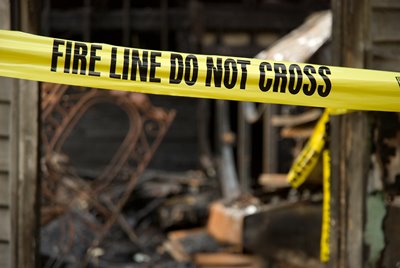Share This Article:
The 2021 wildfire season was a slight improvement over the devastating 2020 season, which burned more than 10.1 million acres. As of early December, U.S. wildfires burned more than 7.6 million acres. The largest wildfire in 2021 was the California Dixie fire, burning more than 960,000 acres before it was contained. The latest fire of the season, the Marshall Fire, in Boulder, Colorado, burned through 6,200 acres destroying 1,000 homes, a shopping complex and a hotel. Wind gusts of nearly 110 mph helped fan the flames that would be extinguished two days later by almost a foot of snow.
There is no official start date to wildfire season; most are likely to happen between May and October. However, in the past few years, there have been significant fires through the end of December.
Severe drought was the primary reason for wildfires in the West. Other weather conditions that make it easier for wildfires to start and spread are strong winds, high heat, low humidity and lightning, which are all compounded by the climate change crisis.
Wildfire Restoration: How to Get Started with Recovery Efforts

As the latest round of wildfires become contained, businesses in the areas affected are preparing to start recovery and restoration efforts. Agents should be prepared for the influx of calls from clients ready to start the claim process. It’s important for workers involved in the cleanup to understand the risks involved in the restoration, which according to the CDC include:
- Carbon monoxide poisoning
- Respiratory issues caused by ash, soot and other materials
- Electrical hazards
- Possibility of igniting a new fire
- Strains and injuries to hands, knees, shoulders and back
- Operating heavy equipment
- Extreme fluctuations in temperature
- Exposure to hazardous materials
Often, professional cleaning services or fire or smoke remediation contractors are needed for cleanup efforts following a fire due to the specialized equipment and services necessary for proper restoration. It’s imperative that any workers assisting in the wildfire cleanup efforts have access to protective clothing items like hard hats, goggles, gloves, steel-toed boots, dust masks or respirators, etc.
The Los Angeles County Department of Public Health offers guidelines to help business owners get started on the cleanup and restoration process after a fire, too. A few general tips include:
- Ventilate the area by opening doors and windows
- Remove burnt debris as soon as possible to reduce odors
- Avoid using deodorants as they mask odors that can indicate health concerns
- Install dehumidifiers to reduce moisture in the air if water was used to extinguish the fire
- Plastic surfaces like PVC windows should be cleaned using a mild alkali detergent to remove acidic soot that can activate moisture in the air and cause permanent staining
Wildfire Loss Prevention Tips
When your clients are located in a region that is prone to wildfires, there are fire preparedness procedures they can do to help reduce some of the damage caused by such a disaster. Businesses should be aware of the type of Fire Hazard Severity Zone (FHSZ) they are located in, which is typically classified as extreme, high or moderate. This is based on an evaluation of their area, including fire history, plants and landscaping, slope and other terrain features that can impact the growth and spreading of wildfires. Knowing the FHSZ rating will impact the construction ordinances and material requirements that can help reduce some of the damage caused by wildfires.
Additionally, understanding how to create a defensible space around a commercial building can increase the likelihood of a business surviving a wildfire. A defensible space is the area between the building and the approaching fire where landscaping has been managed to reduce damage. For instance, 30-100 feet away from the property line (known as Zone 3) should feature trees and brush that are spaced in such a way that fires are forced to drop from tree crowns to the ground. The area 5-30 feet from the property line (Zone 2) should feature well-spaced vegetation that is maintained and healthy, while tall grasses, hanging branches and other plants that allow fire to climb up trees are completely eliminated. Finally, in Zone 1, which is 0-5 feet from the building, planting woody vegetation should be avoided, and the plants and trees that are in this area should be carefully managed at all times.
Courtesy of AmTrust Financial
Read Also
- Jul 01, 2024
- Frank Ferreri
- Oct 19, 2023
- Bill Zachry
About The Author
About The Author
- WorkersCompensation.com
More by This Author
- Jun 24, 2024
- WorkersCompensation.com
- May 11, 2023
- WorkersCompensation.com
- May 10, 2023
- WorkersCompensation.com
Read More
- Jul 01, 2024
- Frank Ferreri
- Oct 19, 2023
- Bill Zachry
- Oct 12, 2023
- Liz Carey
- Sep 28, 2023
- F.J. Thomas
- Sep 28, 2023
- WorkersCompensation.com
- Sep 15, 2023
- Chris Parker




